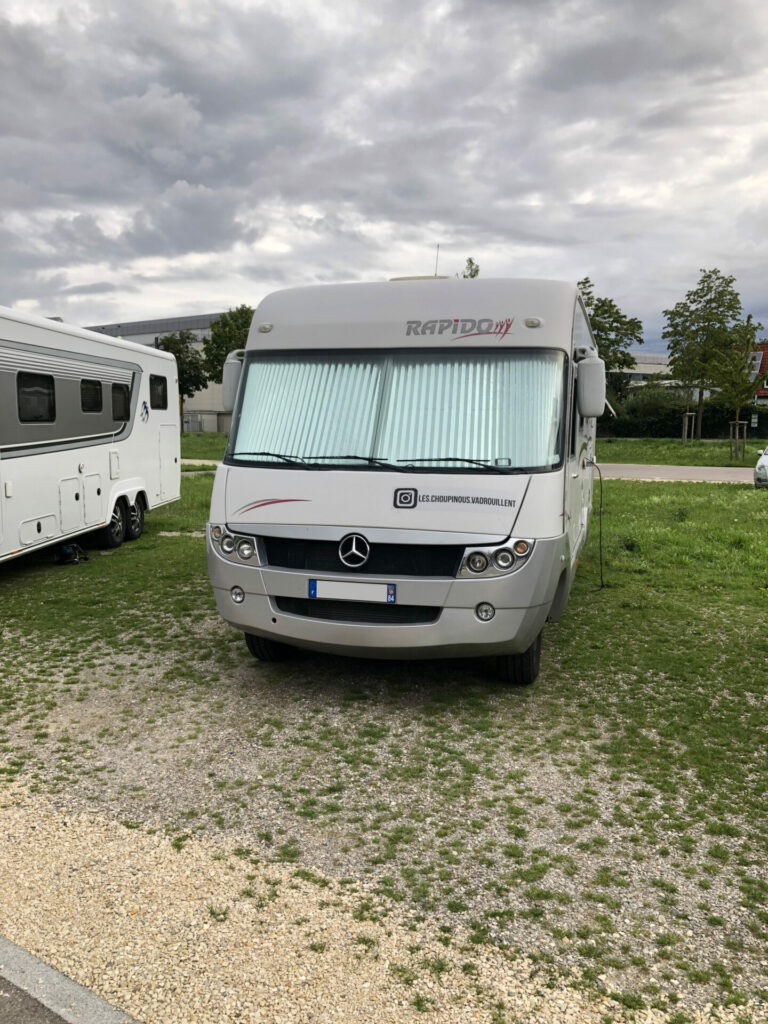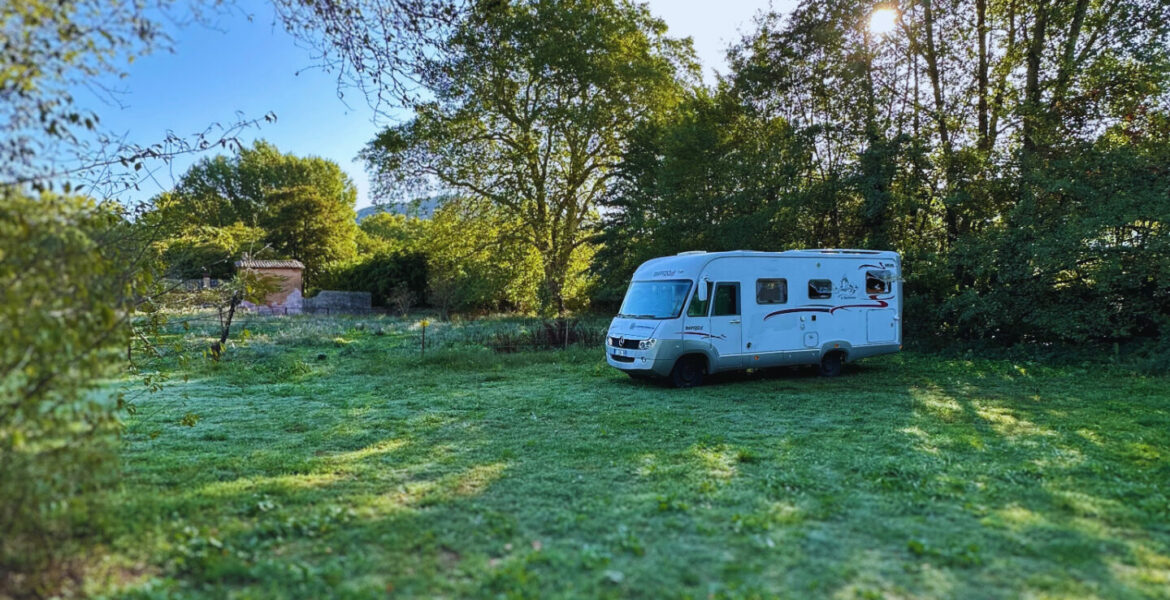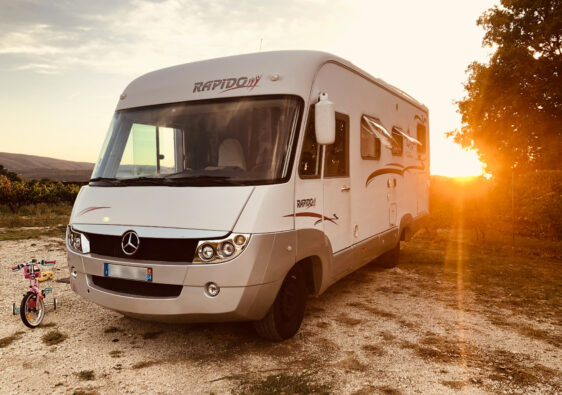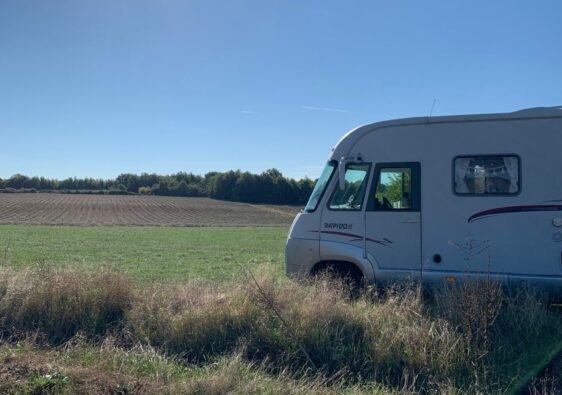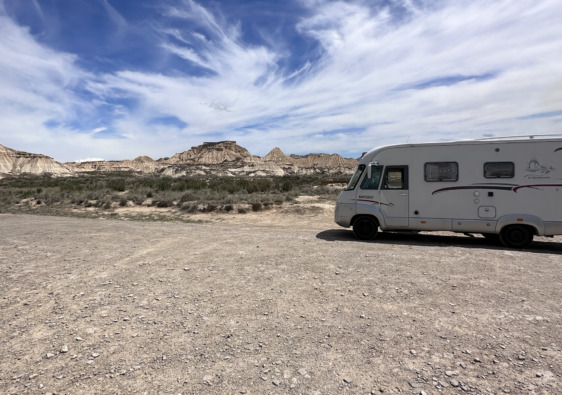✍️ This article was originally published on 8 March 2024, it was updated on 26 June 2024.
Separating the cockpit from the driving area
The parts where cold and moisture penetrate the most are of course the openings, as well as all the windows. The windshield, which can vary in size depending on your camper model, is the weak point for insulating your vehicle from the cold. Insulating this part is therefore essential to retain as much warmth as possible in the cockpit.
There are several ways to insulate this part of the vehicle:
- Insulate the windshield with an interior or exterior thermal protection. This thermal protection comes at a certain cost but remains a good investment to reduce heating needs in the cockpit.
- Create an insulation partition. Depending on your camper model, you can install a partition to completely separate the cockpit from the vehicle area, leaving only a small opening to pass from one to the other. This solution will require a slightly larger budget and some DIY skills!
- Install a curtain: this is the economical solution and the one we chose. Since we don’t use the vehicle during very cold periods, it’s more than sufficient.
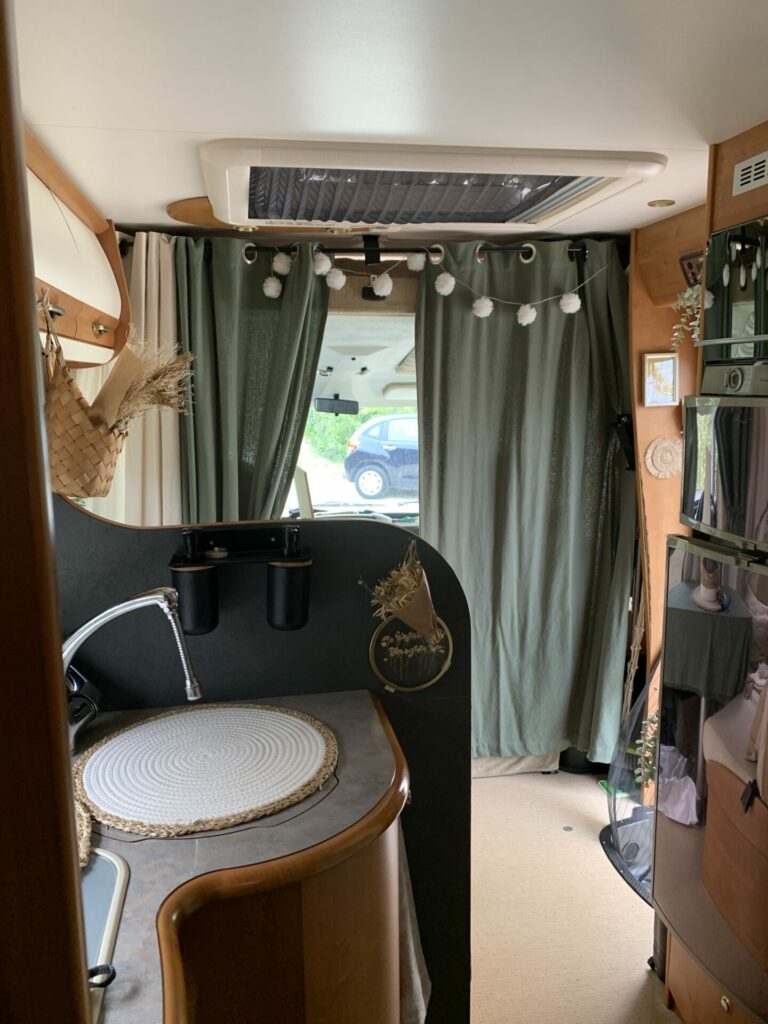
Thermal insulation of the camper van
It’s essential to insulate the openings because that’s where cold and moisture seep through.
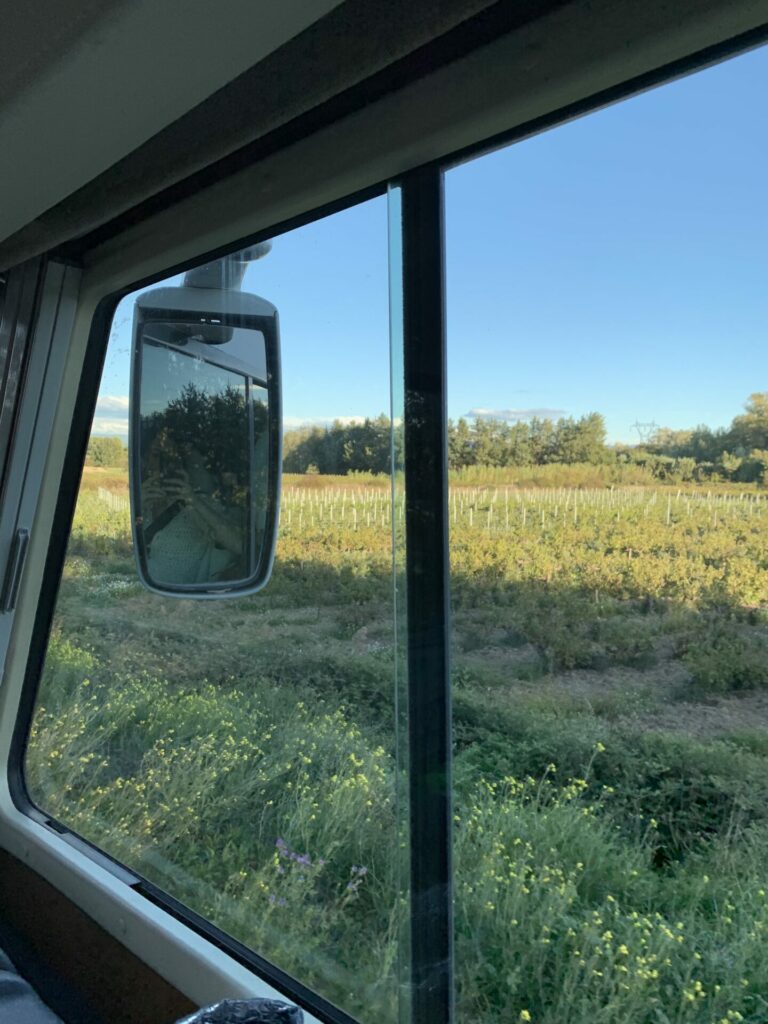
To achieve this, carefully choose your insulation materials based on their insulation efficiency, resistance to moisture, and ease of installation.
In stores, you can find thermal protections for the windshield, for example, but they can be quite costly. It’s possible to make these yourself by selecting the right materials.

For the windows, retractable “blinds” are typically insulated, but this might not be sufficient in extreme temperatures. You can enhance these protections by adding thermal curtains or window insulating films to minimize heat loss.
Identify thermal “leaks” and insulate areas where heat escapes easily, such as around windows, doors, and pipe passages. Use specific insulation materials for these zones.
However, be cautious not to completely seal everything off; it’s important for your camper van to “breathe” to prevent mold formation!
Insulating the floor of the camper van
Yet another significant issue when it comes to heat! Often, depending on the temperatures, the floor can be quite cold. Besides cooling down the interior, walking on a frozen floor is far from pleasant!
Use thick rugs or cover your floor with insulating carpet (our choice). The carpet prevents us from feeling cold when walking in socks, and we’ve also noticed a significant improvement in the interior temperature. We opted not to glue the carpet but simply lay it down so we can remove it in the summer.
Check the seal of the camper door
Depending on the condition and age of your vehicle, remember to check the seal of the camper door, which, if damaged, can let in a lot of air! Often, these seals tend to dry out over the years if not regularly maintained, and they can subsequently deteriorate.
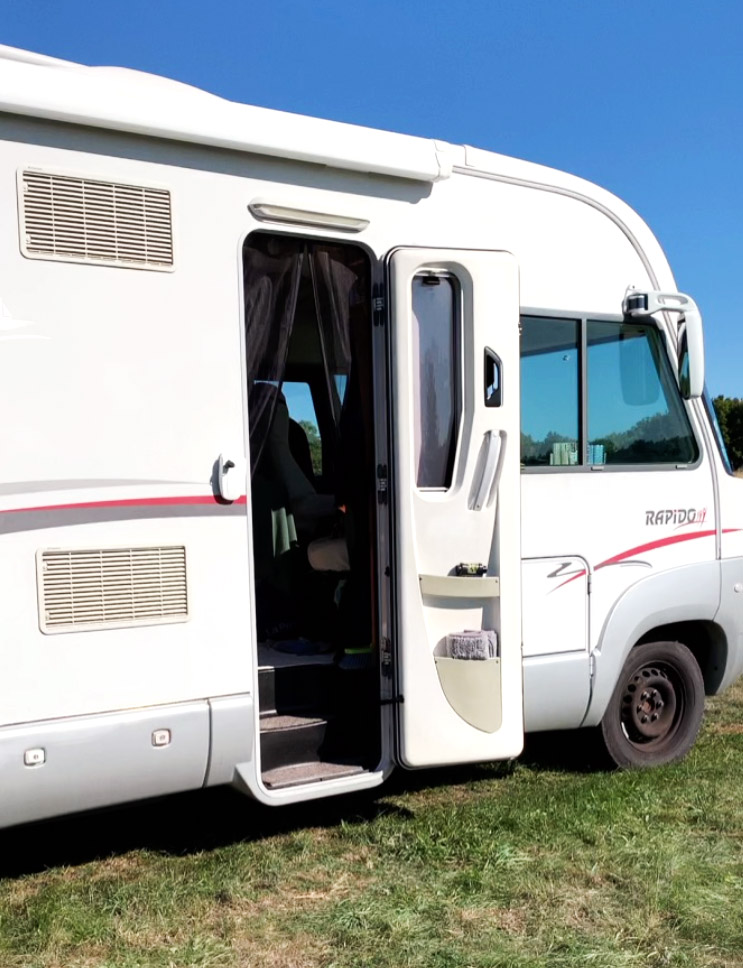
Do not completely turn off the heating during the day
We advise maintaining a minimum temperature in your camper van even when you’re out exploring during the day.
This minimum temperature helps combat humidity and prevents excessive heating upon your return, which would lead to overconsumption!
Beware of the flip side and condensation
Sometimes, people are so afraid of the cold that they insulate absolutely everywhere! However, your camper van needs ventilation to avoid issues like mold or high humidity.
- Therefore, think about ventilation! Ensure good “natural” ventilation inside the camper to prevent condensation and water running down the windows. Also, remember to air out your camper van daily, even in winter!
- Moisture absorbers can be helpful if humidity becomes a problem: use chemical or natural moisture absorbers, or even electric ones if your setup allows.
- And finally, the most crucial point: regularly check and maintain the waterproofing of your camper van. Repair leaks and water infiltrations promptly to prevent serious moisture problems that could cause significant damage, sometimes irreparable! So, don’t forget to conduct your waterproofing test every one to two years.
